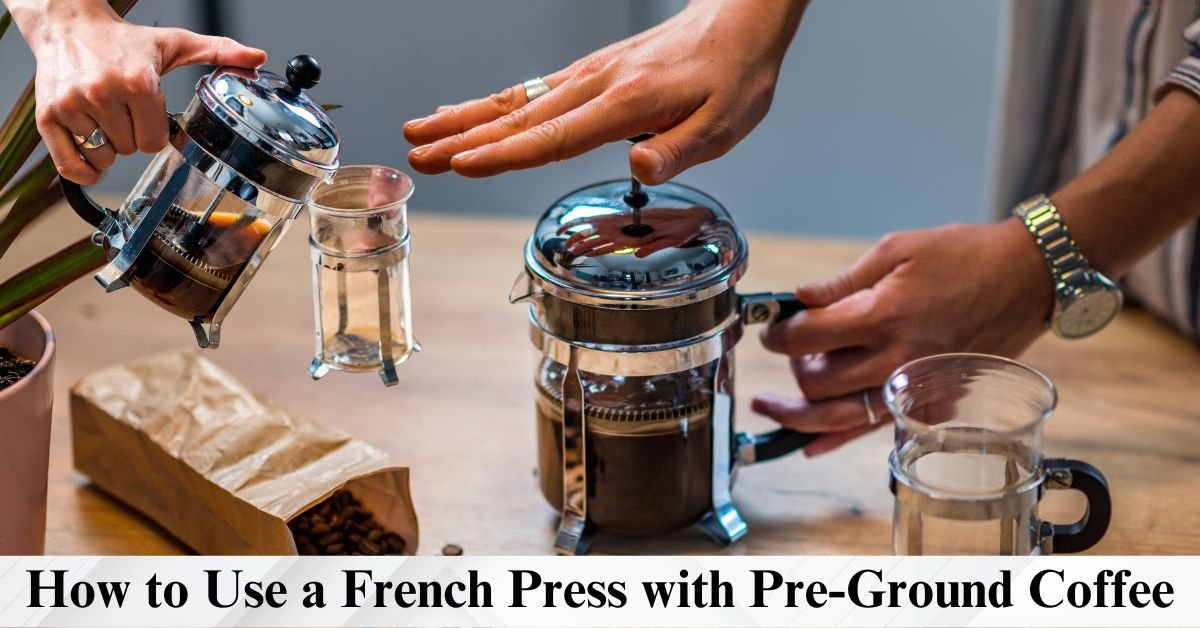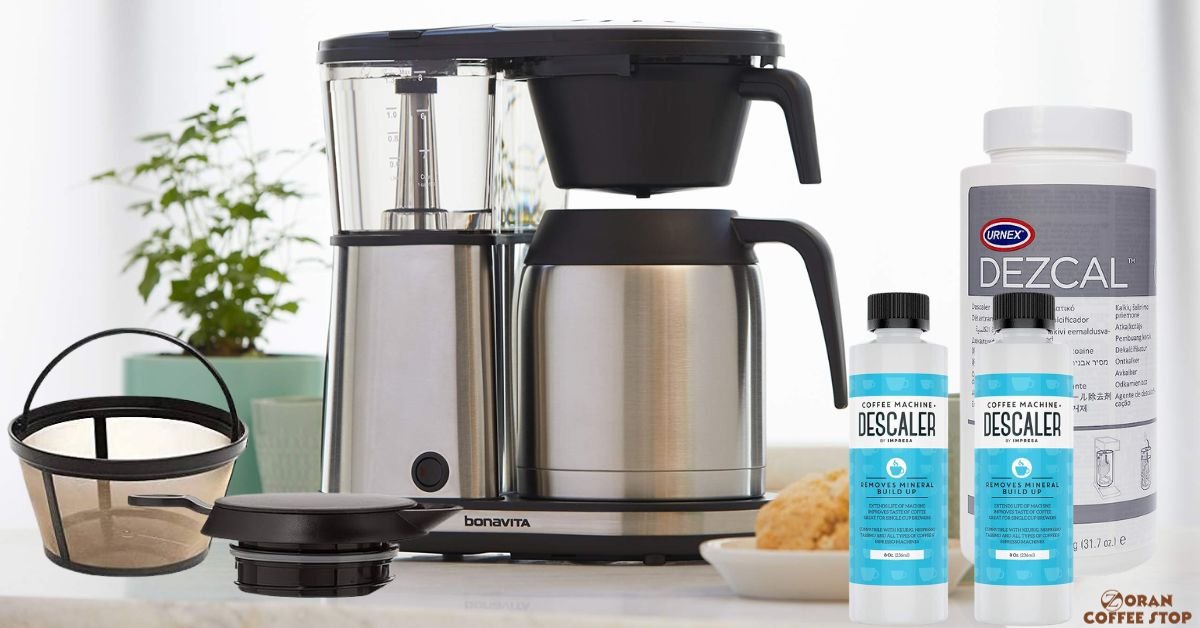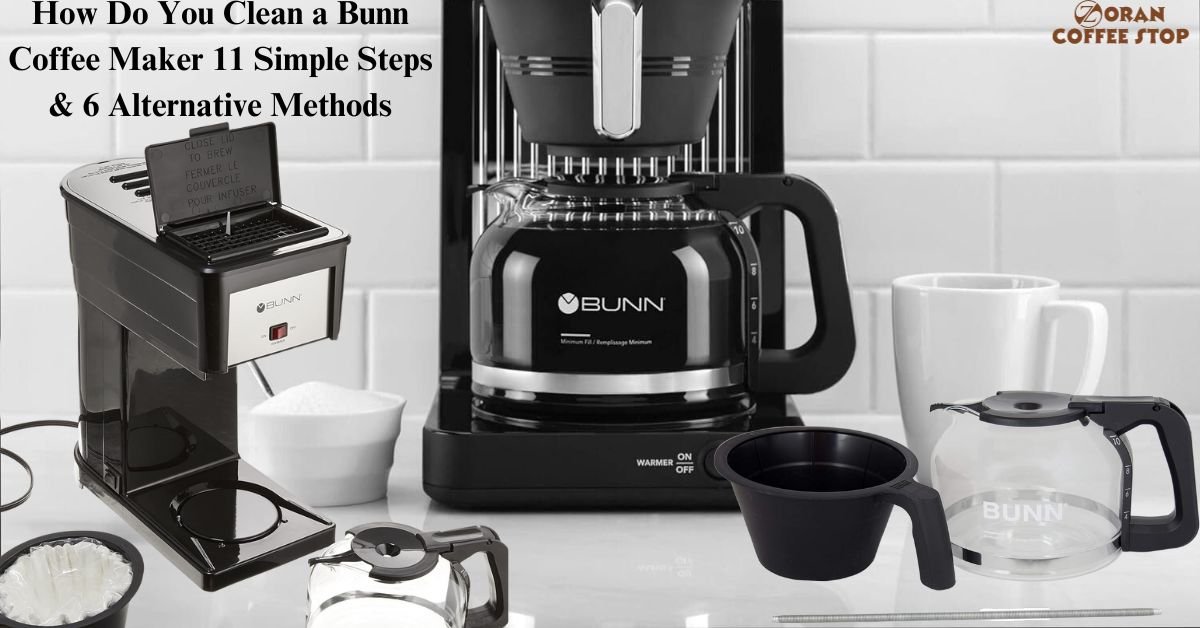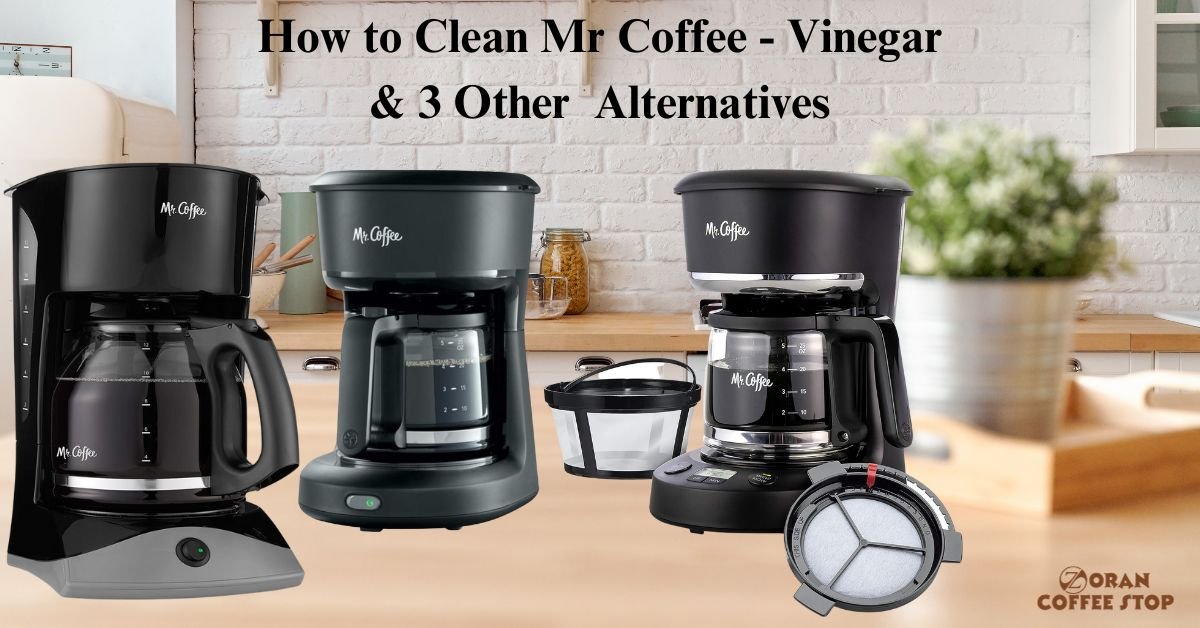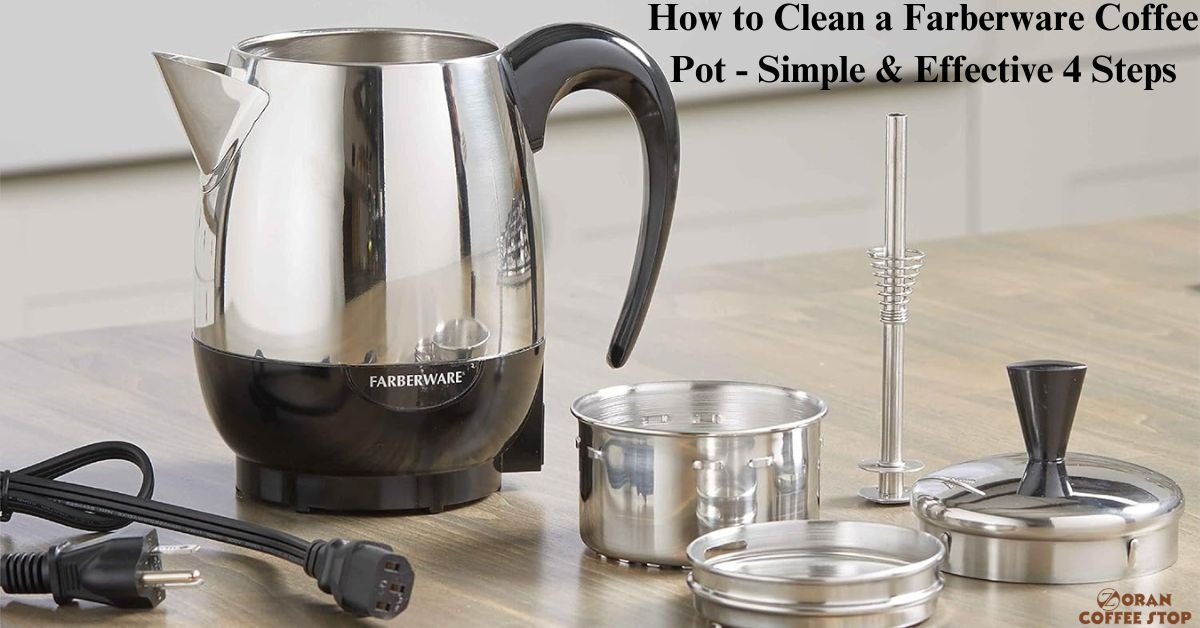Do you love coffee but don’t have time to grind beans every morning? If so, a French press is the perfect brewing method for you! This simple device can produce a delicious cup of coffee from pre-ground coffee, and it’s easy to use.
To get the best results from your French press, it’s important to use a coarse grind. This is because pre-ground coffee is already more exposed to air, which can cause it to become bitter if it’s brewed for too long. A shorter brewing time, typically 3-4 minutes, is enough to have a perfect French press cup.
In this beginner’s guide, we’ll show you how to use a French press with pre-ground coffee to make a delicious cup of coffee. So gather your ingredients and let’s get started!
What Is a French Press?
A French press, also known as a press pot, plunger pot, or cafetière, is a popular manual coffee brewing device. It consists of a cylindrical glass or stainless steel container with a plunger and a mesh filter. The design allows users to brew coffee by steeping coarsely ground coffee beans in hot water and then separating the grounds from the liquid through the plunging action.
The carafe is the main body of the French press, and it is where the coffee is brewed. The plunger is a rod with a handle that is used to push down the filter screen. The filter screen is a mesh screen that separates the coffee grounds from the brewed coffee.
To use a French press, you first add the ground coffee to the carafe. Then, pour hot water over the coffee grounds and let it steep for 3-4 minutes. After the coffee has steeped, you use the plunger to push down on the filter screen, which separates the coffee grounds from the brewed coffee. The brewed coffee is then ready to be enjoyed.
Why People Love French Press Coffee?
French presses are a popular choice for coffee lovers because they are easy to use and they produce a delicious cup of coffee. They are a relatively affordable option, and they are available in a variety of sizes and styles. French Press is also a very versatile brewing method, as you can use it with a variety of different coffee beans and grind sizes.
French press coffee allows for maximum extraction of the coffee’s natural oils and flavors. The metal mesh filter used in a French press lets more coffee solids pass through, resulting in a more robust and full-bodied cup of coffee compared to paper filters used in other brewing methods.
With a French press, you have control over the steeping time, which directly affects the coffee’s strength and flavor. You can adjust the brewing time to your preference, resulting in a customized and personalized cup of coffee. French press is straightforward and requires minimal equipment. It’s an excellent option for those who want to make coffee without dealing with complex machines or gadgets.
Additionally
- Unlike drip coffee makers or espresso machines, a French press does not require electricity. It’s an ideal choice for camping, traveling, or situations where power is not available.
- French press coffee also has a creamy texture. This is because the coffee grounds are not filtered out of the coffee, which leaves behind some of the oils and fats from the beans.
- Unlike single-use coffee pods or paper filters used in some other brewing methods, the French press requires no disposable components. The main components, the carafe, and the mesh filter are durable and reusable, making it an eco-friendly choice for coffee brewing.
- French presses can be used to brew various types of coffee, including regular coffee, cold brew, or even loose-leaf tea, making it a versatile brewing device.
How to Use a French Press with Pre-Ground Coffee Complete Guide
Whether you’re a coffee lover or just starting out, this complete guide will show you how to brew a delicious cup of French press coffee with pre-ground coffee. From choosing the right beans to steeping time, we’ll cover everything you need to know to make a cup of coffee that will rival anything you’ve had from a coffee shop.
So what are you waiting for? Start brewing today and enjoy a delicious cup of French press coffee with pre-ground coffee!
Begin with Choosing the Right Coffee Beans
If you want to brew the perfect cup of French press coffee, it all starts with selecting the right coffee beans. The beans you choose will significantly impact the flavor, aroma, and overall quality of your coffee. Freshness, roast level, and taste preferences all play a role in crafting that perfect cup of coffee that you can savor and enjoy to the fullest.
How to Choose the Right Coffee Beans for French Press
- Always choose freshly roasted coffee beans. Look for the roast date on the packaging to ensure the beans are as fresh as possible. Fresher beans retain more of their natural flavors and aromas, resulting in a more satisfying cup of coffee.
- Coffee beans come in various roast levels, ranging from light to dark. For French press brewing, medium to dark roast beans tend to work best. Medium roasts offer a balanced flavor profile, while dark roasts deliver a more robust and intense coffee taste. You can also experiment with different types of beans, such as Arabica or Robusta, to find your favorite flavor.
-
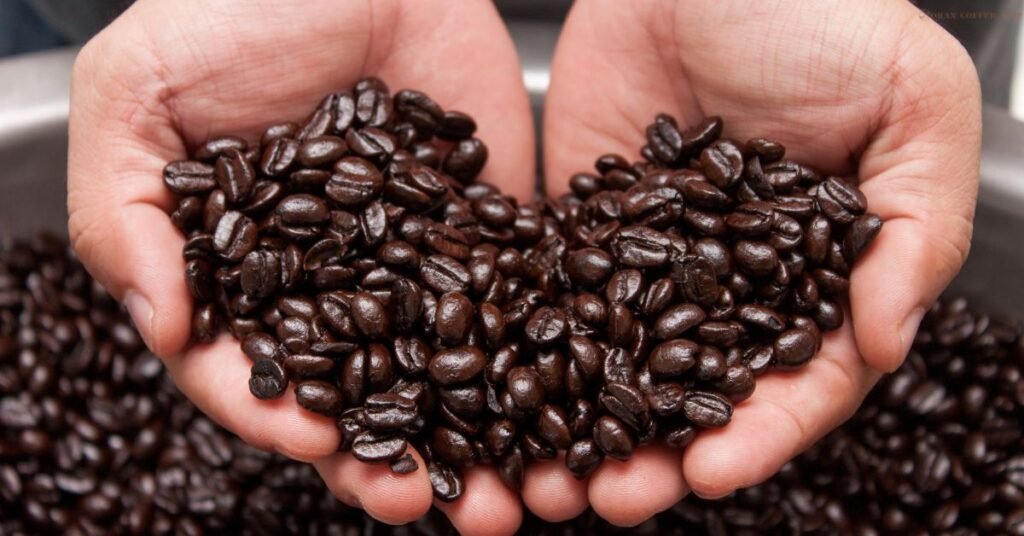
French press dark roast coffee beans - Whole coffee beans retain their freshness better than pre-ground coffee. Invest in a good-quality coffee grinder to grind the beans just before brewing. This ensures maximum flavor extraction and a fresher cup of coffee.
- Consider your taste preferences when choosing coffee beans. If you enjoy bright and fruity flavors, go for beans from regions like Ethiopia or Kenya. For those who prefer nutty and chocolatey notes, beans from South America, such as Brazil or Colombia, might be more appealing.
- To ensure your coffee stays fresh, buy beans in small quantities that you can use within a week or two. Avoid buying large amounts that could lead to staleness and a loss of flavor over time.
Why Buy Your Coffee Locally?
Supporting local coffee roasters and buying your coffee locally is not only a great way to enjoy fresh and high-quality beans but also contributes to the local economy and community. Here are some reasons why buying your coffee locally is a fantastic idea;
- Local coffee roasters often roast their beans in small batches, ensuring that you get the freshest coffee possible. Freshly roasted beans retain their flavors and aromas much better than those that have been sitting on store shelves for extended periods.
- Regional roasters often offer a diverse selection of coffee beans sourced from different regions worldwide. These beans might have unique flavor profiles that are not commonly found in mass-produced coffee brands.
- Some local roasters may also offer freshly brewed coffee in their cafes or shops. They are often passionate about their craft and are more likely to provide personalized recommendations based on your taste preferences. They can suggest specific beans or blends that suit your coffee palate.
Benefits of Grinding Beans Just Before Brewing
If you want to boost your coffee experience and enjoy the most delicious cup of coffee possible, one essential step is to grind your beans just before brewing. Grinding your coffee beans right before brewing offers several advantages that significantly impact the flavor and aroma of your coffee.
Whole coffee beans contain natural oils that preserve their rich flavors and enticing aromas. However, when you grind the beans beforehand, these oils are exposed to the air and begin to oxidize, leading to a loss of freshness over time. By grinding your beans immediately before brewing, you can ensure that the beans’ natural essence is retained until the very last moment, resulting in a more rich and aromatic coffee experience.
Additionally, freshly ground coffee allows for optimal flavor extraction during the brewing process. The larger surface area of the ground coffee enables water to extract the coffee’s full range of flavors, producing a richer and more complex cup of coffee. This also provides the opportunity to customize the grind size to match your preferred brewing method, whether it’s a French press, pour-over, or espresso machine.
Importance of a Burr Grinder
A burr grinder will give you a more consistent grind, which is important for extracting the flavor of the coffee beans. By grinding only what you need for immediate brewing, you avoid the risk of using stale grounds, which can lead to a lackluster and dull cup of coffee.
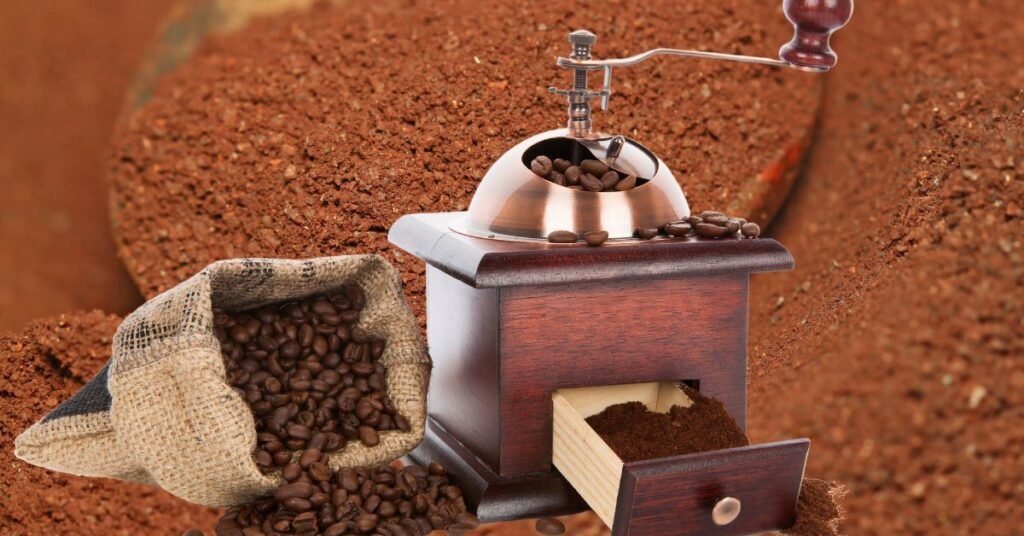
How to Grind Coffee Beans for French Press
To achieve the perfect cup of French press coffee, using coarsely ground coffee is essential. Coarse grounds provide the ideal size for optimal extraction, preventing over-extraction and resulting in a smoother and less bitter brew. They are larger, minimizing the risk of rogue coffee grounds and fines finding their way into your cup, ensuring a cleaner coffee experience.
To properly grind your coffee beans for French press brewing, you have the option of a burr grinder or a blade grinder. Both types of grinders will work, but a burr grinder is recommended for more consistent and even grounds. Just set a coarse grind similar to sea salt or coarse sand. If you have a preprogrammed coffee grinder, set it to a medium grind. For manual electric grinders or hand grinders, grind the coffee until it resembles large sand crystals.
On the other hand, fine ground coffee is a definite no-go for the French press. It may lead to a muddy and thick cup of coffee, or if the beans aren’t ground enough, it can result in a flavorless and watery brew. Additionally, If you choose pre-ground coffee, be cautious about the grind size, avoiding anything labeled for espresso, as it will be too fine for the French press. Pre-packaged, pre-ground coffee may also have a grind that is too small, leading to silty or gritty coffee.
Coarse Ground for French Press
Coarse grounds are essential for French press brewing. They slow down water flow during steeping, which preserves natural flavors and oils while avoiding bitter compounds. The coarse grind also ensures effective filtration during pressing, resulting in a clean, sediment-free cup of coffee.
To make a perfect cup of French press coffee, use 2 tablespoons of coffee per cup of water and steep for 4 minutes. Then, press the plunger slowly to prevent over-extraction.
Water Temperature for French Press Celsius
Water and temperature play crucial roles in achieving the best French press coffee. Filtered or bottled water is often a good choice and is always recommended as the best water for French press coffee. to avoid any impurities that can affect the taste of your coffee. Avoid using distilled or softened water, as they may lack the essential minerals needed for optimal coffee extraction.
For French press brewing, the water should be heated to around 195-205°F (90-96°C). This temperature range allows for proper extraction of the coffee flavors without scalding the beans or producing a bitter taste. If the water is too hot, it will extract too many bitter compounds from the beans, resulting in a harsh cup of coffee. If the water is too cold, it will not extract enough flavor from the beans, resulting in a weak cup of coffee.
French Press Steep Time
The ideal steep time for French press coffee is 4 minutes. However, you can adjust this time to your liking. For a more mellow cup, steep for 3.5 minutes. For a more flavorful and strong cup, steep for 5 minutes. Remember, the plunger should be pressed slowly and carefully. This will help to prevent the coffee grounds from being over-extracted.
Can water be too hot for the French press?
To achieve the ideal water temperature, bring the water to a boil and then let it cool for about 30 seconds to 1 minute, before pouring it over the coffee grounds in the French press. This slight cooldown helps reach the desired brewing temperature for a perfect cup.
Now that you know how to brew the perfect cup of French press coffee, why not give it a try?
French Press Coffee Ratio tbsp
The Ratio of Coffee to Water is a fundamental aspect of French press brewing that significantly impacts the taste and strength of your coffee. The recommended standard ratio for French press coffee is 1:15 or 1:16, which means one part of coffee to 15 or 16 parts of water, respectively.
However, coffee brewing is a matter of personal preference, and you can adjust the ratio to suit your taste. If you prefer a stronger brew, you can increase the amount of coffee, or if you like a milder cup, you can decrease it slightly. It is important to note that the grind size of the coffee beans will also affect the strength of the coffee.
For example;
For a standard 8-ounce (240 mL) cup of French press coffee, you would use approximately 1 to 3 tablespoons of coffee grounds. The standard ratio is 2 tablespoons, but you can adjust this to your liking. For a milder cup, use 1 tablespoon, and for a stronger cup, use 3 tablespoons.
For a larger 32-ounce (950 mL) French press, you would use around 4 to 4.5 tablespoons of coffee grounds for a milder brew and 8 to 9 tablespoons for a stronger cup of French press coffee. Additionally, 1 liter of water would need approximately 60 to 65 grams of coffee (about 10 to 11 tablespoons).
For the French press, you want to use a coarse grind. A coarse grind will allow the water to flow through the coffee grounds more easily, resulting in a less bitter cup of coffee. If you are using pre-ground coffee, be sure to use a coarse grind. While, If you use a fine grind, the coffee will be too bitter.
How to Use a French Press in Simple Steps
Using a French press to brew delicious coffee is a straightforward process. Here’s a step-by-step guide to help you make a perfect cup:
- Gather your materials, You will need a French press, coffee grounds, filtered or bottled water, a kettle or stovetop, and a timer.
- Measure coffee beans a standard ratio is 1:15 or 1:16, so for an 8-ounce (240 mL) cup, use 2 tablespoons of coffee grounds.
- Bring water to a boil and let it sit for about 30 seconds to reach the ideal temperature of 195-205°F (90-96°C).
- Before brewing, pour some hot water into the French press to preheat the carafe. This helps maintain the water temperature during brewing.
- Discard the preheating water, and place the coarsely ground coffee into the preheated French press. Add just enough water to cover the coffee grounds and let it sit for about 30 seconds. This “blooming” process allows the coffee to degas, leading to a more even extraction.
- After that pour the hot water over the coffee grounds in the French press. Ensure that all the coffee grounds are evenly saturated.
- Place the lid with the plunger on top of the French press but do not press down. Let the coffee steep for about 4 minutes. Adjust the steeping time to your taste preferences if needed.
- After the steeping time is up, slowly press down the plunger, separating the coffee grounds from the liquid. Apply steady pressure, but avoid pressing too hard to prevent over-extraction.
French Press Tips For Pre-Ground Coffee
When buying pre-ground coffee, choose a coarse grind specifically labeled for French press brewing. Avoid fine or medium grinds, as they can lead to over-extraction and a bitter taste. Since pre-ground coffee may have a finer consistency than ideal for a French press, consider reducing the steeping time to avoid over-extraction. Try steeping for 3 to 3.5 minutes instead of the usual 4 minutes.
While pre-ground coffee is convenient, it may not be as fresh as grinding your beans just before brewing. Be mindful of the expiration date and choose a reputable brand to ensure better flavor. Remember, French press coffee is best enjoyed immediately after brewing, as it can become bitter if left to sit for too long.
Conclusion
In conclusion, using a French press with pre-ground coffee can be a convenient and accessible way to enjoy a delicious cup of coffee. By following the step-by-step guide and tips provided, you can make the most of your French press brewing experience. Choosing the right coffee beans, using a coarse grind, and paying attention to water temperature and steeping time are essential factors in achieving the perfect French press coffee with pre-ground beans.
Additionally, investing in a good-quality coffee grinder allows for fresher and more customizable coffee. So, why not try to clear your query about How to Use a French Press with Pre-Ground Coffee? With a little practice and experimentation, you can elevate your coffee experience and enjoy a rich, satisfying cup that rivals even the best coffee shops.
How much coffee do you put in a French press pre-ground?
For a French press with pre-ground coffee, a standard ratio is 1:15 or 1:16, which means using approximately 2 tablespoons of pre-ground coffee per 8-ounce (240 mL) cup of water. However, you can adjust the amount of coffee to your taste preferences. For a milder cup, use 1 tablespoon, and for a stronger cup, use up to 3 tablespoons. Keep in mind that the grind size of the pre-ground coffee will also affect the strength of the brew, so make sure to use a coarse grind specifically labeled for French press brewing.
How long to soak coffee grounds in French press?
For a French press, the recommended steeping time for coffee grounds is typically 3 to 4 minutes. During this time, the coarsely ground coffee is immersed in hot water to extract its flavors and aromas. Adjust the steeping time to your taste preferences; a shorter steeping time may result in a milder cup, while a longer steeping time may yield a stronger and more robust flavor.
Why is my French Press coffee bitter?
French press coffee may taste bitter due to over-extraction, caused by steeping the grounds for too long. To avoid bitterness, stick to the recommended 3-4 minutes steeping time and use coarsely ground coffee. Keep the water temperature between 195-205°F (90-96°C) and apply gentle pressure when plunging. Using fresh, high-quality coffee beans also helps ensure a smoother, less bitter cup of coffee.
